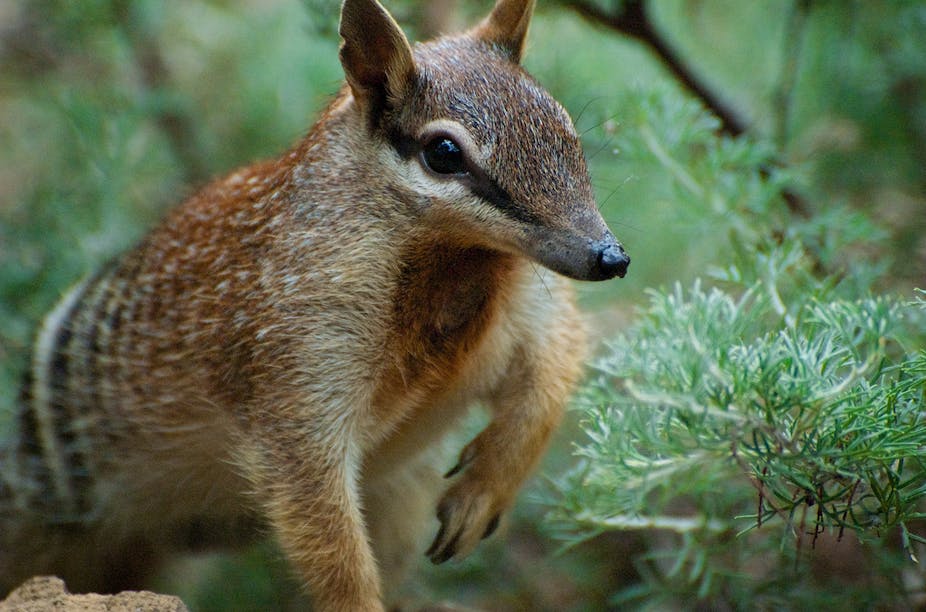Tim Flannery, in his Quarterly Essay After the Future, is right to deplore the sudden abrogation of responsibility for threatened species by state and federal governments. The tragedy is that neglecting endangered species is the wrong thing to do on so many counts. It does not reflect the popular will of the people. And it is counter to what is happening elsewhere in the world.
To take the last point first. In Hyderabad recently the Conference of Parties to the Convention on Biological Diversity – which includes representatives of nearly all world governments - agreed to double the funding for the Global Environment Fund (GEF) to $10 billion a year. Although still less than required for improving the status of all threatened species and for protecting critical habitats, this was still a big step forward.
Significantly, India and several African countries also agreed to contribute to the GEF.
The world is taking a serious interest in saving species. And with good reason – there is increasing evidence that biodiversity loss has an influence on ecosystem service provision on a par with drought, ozone loss, acidification and climate warming. Species conservation is an investment in natural capital that provides enormous returns.
So why are Australian governments turning off threatened species? While Australia did contribute $23 million to the GEF through AusAid in 2011-12, here at home there is no coordinated national pool of funds for threatened species. The carbon fund and Caring for Country are lotteries in which winning tickets are too often captured by local agendas unrelated to the risk of species loss.
And the states and territories have always been poor cousins. While they have long employed threatened species managers – often deeply committed individuals who have devoted decades to retaining species for future generations – the operating money has usually had to be gleaned from a reluctant Commonwealth.
Since 2009 that money has been ever harder to obtain. That was when Peter Garrett got up at the INTECOL conference in Brisbane and said that funding would be given to protecting landscapes not species. I wonder if it weighs on his conscience, and those of his advisers, that this statement led directly to extinction of the Christmas Island Pipistrelle, the first mammal extinction in a generation.

For many senior bureaucrats, Garrett’s statement was a license not to care, to make muscular decisions not to fund, supposedly on the basis that this is what the elected government wanted. I have actually attended a meeting of senior “conservation” managers in Brisbane who were only half joking when they said they would like species to go extinct because of the trouble they caused.
The real trouble is that Garrett’s statement was built on two myths.
The first is that threatened species funding does not work. Bunkum. Australia has a remarkable record of bringing animals back from the dead. All around the country there are animals and plants that were reduced to near extinction. But through thorough research, clever management coupled with diligent monitoring, and sustained commitment from both government and the local community, the small numbers have increased until extinction is now improbable.
Saving species can be expensive – small amounts smeared across many species just leads to wastage – but it works. We could abandon some species – a decision for the public not public servants to make. But for a relatively tiny amount we could save all of them.
Part of the perception is that the lists are not kept up to date. For instance there are 28 species or subspecies of bird on the EPBC lists that do not meet IUCN Red List criteria. Erroneously listed species waste resources and erode confidence. However the problem is with the listing process, not the efforts of threatened species managers. The conservation status of over 100 birds is better than it might have been without conservation funding. Poor administration of a clumsy Act is no excuse for abandoning threatened species.
The other myth is that people do not care. Work by Charles Darwin University PhD student Gill Ainsworth shows that is wrong. In a survey designed to avoid bias, 75% said they would become upset if a bird became extinct (compared to 7% who disagreed); 74% said that people have a moral obligation to protect threatened birds (compared with 5%); and 47% said that the needs of threatened species can come ahead of people compared with 15% who thought the opposite.
There is a political opportunity here for the major parties to differentiate themselves. Though the Greens have organised a Senate inquiry into threatened species funding in Australia (submissions due 14th December), Tim Flannery is right – the Greens do not own threatened species. That is why the Australian Wildlife Conservancy is attracting corporate support. That is why many of the poorer respondents to Gill’s survey were willing to give money to threatened species protection if asked.
Ultimately of course threatened species protection is a political question. But it is also has deeper moral implications. What we do with our biological inheritance defines who we are as a people. Most countries are proud of their rare species and try to prevent extinction. For Australia our biodiversity should be seen as much a natural blessing as our mineral resources.

